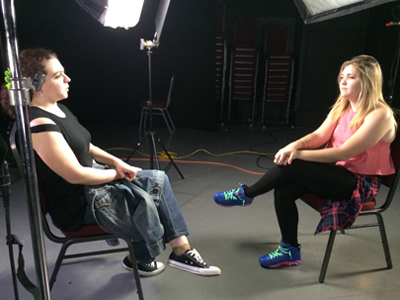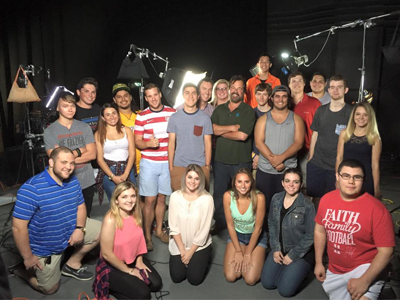Lighting is a key concept in the field of production. I would even say it is the most vital part of a set. Last week I had the opportunity to help set up a 60 Minutes style interview at the Walter Cronkite School. We were in a complete black room with no natural lighting or florescent lights. This is one of the two hardest sets to light, the other being a set with all white walls.
This set was used for a videography class so that they could learn the proper technique of lighting. This was not only a great learning experience for me, but for the students that got to sit in on it as well.
My job included assisting in setting up backlights; fill lights, hair lights, gels, masks and other lighting features.
“When it’s all set up, you start to see things come together, and you start painting with the light,” said director of photography Jim Farrell.
When Jim said this I enjoyed the idea of how light can change the prominence of the different things on the set. Your subjects, the interviewer and interviewee, are the two people on the screen are there to talk and inform. However it is the production crews job to make them come to life and shine (pun intended). Without proper lighting, the viewer can be distracted or focused on something else in the frame other than the two characters, and that will take away from what the topic is actually about.
Lighting must be done meticulously and precisely. If it is not the correct it can be jarring and mess up the entire production.
This experience was informative and useful and I look forward to applying these skills in my own work.
-written by ASU intern Trever Migliorino




